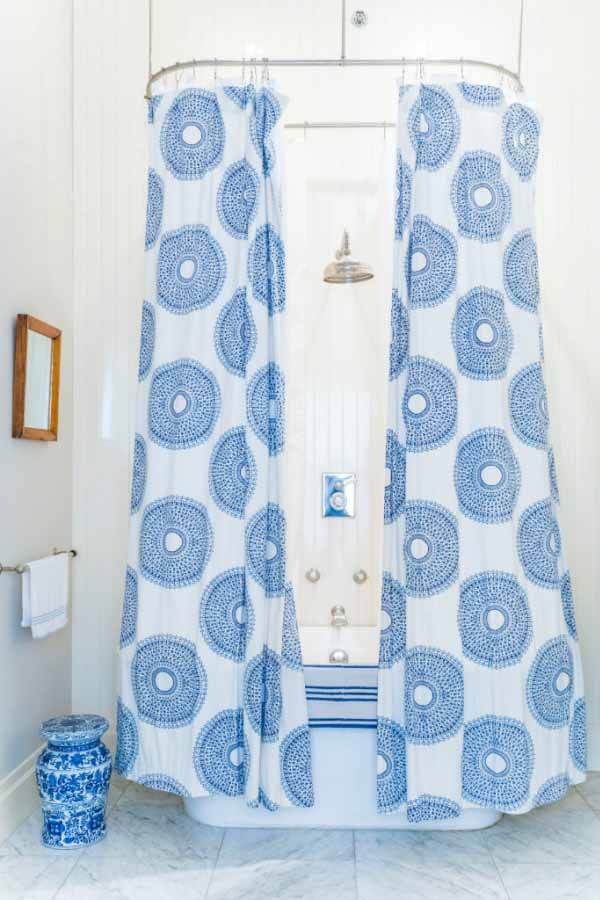It’s no secret toilets get stopped up from time to time, and too much hair or other debris collecting in the shower can keep water from draining properly. But what are the other hidden culprits that could be sabotaging your bathroom? We chatted with a local plumbing expert to find out what’s ruining your bathroom and how to avoid future plumbing emergencies.
5 Ways You’re Slowly Destroying Your Bathroom
Under-Sink Clutter
On any given day, most of us can open up the cabinet under the bathroom sink and find a considerable stash of makeup and hair products, extra hand soap, cleaning supplies and even a wastebasket. It seems like the perfect spot to hide clutter so it isn’t strewn across the bathroom. But what else is hiding under there? According to Andrew Foster, plumbing manager at Roscoe Brown, a local company specializing in plumbing, drains, heating, cooling and insulation, the answer might be a hidden leak. “Too many items under a sink hide potential leaks and force pipes to leak also,” he says. Crowded conditions can keep you from noticing corrosion or a loose pipe connection until it has caused damage to your cabinet, not to mention everything you’re storing under there. So, a good rule of thumb is to keep the under-sink area clean.
Hidden Leaks
Speaking of hidden leaks, is your water bill suddenly and inexplicably higher than normal? Is there a spot of miscellaneous mold or mildew for which you can’t pinpoint a source? You may have a hidden leak, whether it’s behind a wall or beneath the flooring. Unfortunately, leaks are a part of homeownership, and they can lead to even bigger problems down the road if they aren’t nipped in the bud. Regular home maintenance should include bathroom inspections to prevent small leaks from becoming larger ones. Equipping yourself with knowledge is a good plan, too, which means keeping your eye (and your nose) out for telltale leak signs such as musty odors, water stains or damage on ceilings, walls and floors, the presence of mold or mildew, and the aforementioned hike in your water bill.

RELATED: The Secrets to Organizing Your Home Once and for All
Chlorine Tablets & Other Harsh Cleaners
Chlorine tablets and strong cleaners have long been a source of contention in the plumbing world. Many homeowners swear by them, while plumbers would prefer you swear them off. The reality is that they can damage faucet finishes and drains. They can even crack the porcelain. Though chlorine tablets may work wonders for cleaning and disinfecting a swimming pool, they aren’t made for toilets. The chlorine concentration is too high for a piece of equipment that possesses rubber and plastic parts, and prolonged use of them — or any harsh cleaner, for that matter — can corrode the toilet bowl and tank, too. “In-tank and other harsh products have the potential to damage and wear out rubber seals causing high water bills and leaks on the floor,” explains Andrew. “Much like your skin drying out when using similar cleaners, rubber seals are equally susceptible to this damage. So much so, that even some areas with higher chlorine content in their water may experience the same result with simple tap water.” The solution? Avoid using harsh chemicals at all costs.
Flushing Miscellaneous Items Down the Toilet
Just because something appears to be flushable — or even claims to be — doesn’t mean it is. From feminine hygiene products to facial tissues, even some items that seem innocuous are really a blockage waiting to happen. “A good rule of thumb is that if it’s too good to be true, it likely is,” says Andrew. “Most products labeled ‘flushable’ are not good to send down the drain.” The bottom line, no pun intended, is to refrain from flushing anything that isn’t toilet paper or human waste. “Toilet tissue is specifically designed for a rapid breakdown in the plumbing system,” Andrew clarifies. “Other products such as wipes or cleaning pads take much longer to achieve this goal, significantly raising the risk of clogging.”
Shower Curtains
Sure, sometimes a hidden leak is the culprit that’s wreaking havoc on the plumbing system … other times, it’s our own bad habits. Have you ever had to use your towel to mop up a puddle on your floor left by water runoff? Shower curtains serve several purposes, and protecting our bathroom floor from water damage is a critical one. However, improperly positioned tub curtains are notorious for funneling water where it doesn’t belong, causing gradual damage to tiling, baseboards and even the wall. To dodge potential damage, be sure curtains are properly positioned to contain water within the tub or stall. As a side note, curtains also offer the perfect conditions for mold and mildew build-up, so be sure you clean them frequently, too!

RELATED: 10 Next-Level Bathrooms by Top Southern Designers
While the prospect of leaks and plumbing fixes may sound daunting, forethought is half the battle. “Toilet repairs tend to be the easiest repairs to make, yet the most costly to try and live with,” Andrew tells us. In fact, he admits running toilets are the most common reason a homeowner calls a plumber. “Simple mechanical knowledge is much of what it takes to repair these issues,” he tells us. In other words, with a little bit of research, some of the minor issues might even be something you can handle on your own. Nevertheless, prevention goes a long way toward helping you avoid disaster.
**********
Keep up with the best part of life in the South. Subscribe to StyleBlueprint!


















